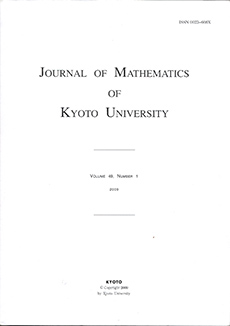Abstract
Let $(X,\Sigma ,\mu )$ be a measure space. It is well known that $l^{p}(X) \subseteq l^{q}(X)$ whenever $0 < p \leq q \leq \infty$. Subramanian [12] characterized all positive measures $\mu$ on $(X,\Sigma )$ for which $L^{p}(\mu ) \subseteq L^{q}(\mu )$ whenever $0 < p \leq q \leq \infty$ and Romero [10] completed and improved some results of Subramanian [12]. Miamee [6] considered the more general inclusion $L^{p}(\mu ) \subseteq L^{q}(\nu )$ where $\mu$ and $\nu$ are two measures on $(X,\Sigma )$.
Let $L(p_{1}, q_{1})(X,\mu )$ and $L(p_{2},q_{2})(X,\nu )$ be two Lorentz spaces,where $0 < p_{1}, p_{2} < \infty$ and $0 < q_{1}, q_{2} \leq \infty$. In this work we generalized these results to the Lorentz spaces and investigated that under what conditions $L(p_{1}, q_{1})(X,\mu ) \subseteq L(p_{2},q_{2})(X,\nu )$ for two different measures $\mu$ and $\nu$ on $(X,\Sigma )$.
Citation
A. Turan Gürkanli. "On the inclusion of some Lorentz spaces." J. Math. Kyoto Univ. 44 (2) 441 - 450, 2004. https://doi.org/10.1215/kjm/1250283559
Information





